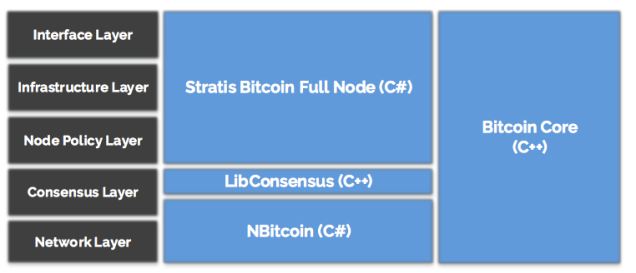It’s been 8 years since the introduction of Bitcoin and problems with the structure of the code are now coming to a precipitous juncture as the crypto currency approaches the deadline for adoption of SegWit 2.
The main issue problem in the adoption of the (necessary) code is that Bitcoin is more than just a currency, its also comprises of the blockchain, which acts as an immutable transparent ledger of all transactions. As Bitcoin has grown, so to have the number of transactions which need to be processed, however, the maximum block size of 1Mb is a severely limiting factor and is what has caused the shift towards SegWit 2.
Even if SegWit 2 is adopted by all of the miners and the block size is increased, this events has highlighted the difficulties of integrating changing Bitcoin in the future. Blockchain technology has proven itself and will be used it all aspects of business in the future. Bitcoin will only grow in use and there will be many more updates which will have to be integrated in order for the technology to keep up with its growth rates. This exponential growth will necessitate that the block size increase exponentially as well and repeated threats of hard forks will not ensure stability.
These issues limit Bitcoins usefulness for corporate clients, who need a scalable, customizable platform to meet their individual needs. Businesses have a variety of specific needs when using the blockchain, such as processing a “high volume of transactions; rapid block times to enable low-latency trading; controlled transactions so that only approved users can submit a request to the network; a given rate of inflation; or additional space for metadata in each block.”
Stratis has been designed with these factors in mind to create a scalable, customizable, modern blockchain platform where businesses are given complete control to meet their personal needs.
Bitcoin and all other blockchain technology runs on similar architecture, called a Full Node, and it is composed of the following layers:
- Network Layer – this deals with which messages are exchanged between full nodes, and how.
- Consensus Layer – this sets the (blockchain-wide) rules for what is considered a valid block.
- Node Policy Layer – this adds more restrictive rules than the Consensus Layer to prevent DDoS (node-wide rule).
- Infrastructure Layer – governs how to store and verify blocks and transactions efficiently.
- Interface Layer – API for developers to query the state of the node, and/or user interface.
Above – The layers for Stratis (right) and Bitcoin (left)
Unlike Bitcoin Core, whose layers are all tied together in Bitcoin Core, Stratis segments individual layers and allows for its Full Node to only deal with the Interface, Infrastructure and Node Policy Layers. Additionally, Stratis is written in C# rather than C++. The former is much more widely used and known by businesses already, making integration easier and smoother than having to develop their own blockchain technology in C++. C# is also a higher coding language, allowing for easier identification of bugs and other bad code.
Because of this segmentation, Stratis allows for the creation of private blockchains, which are based on the main underlying blockchain, but can be modified as needed. The platform is a foundation, which applications can then be built upon. The main chain is accessible by API, giving developers freedom to create within their own ecosystem.
Stratis thus describes itself as the first “Blockchain-as-a-Service” (BaaS), which allows “an on-demand payment model, as well as scalability and removing the need for costly hardware and specialist expertise.” This will open the doors for developers to build test applications and other services without the need to maintain costly hardware or blockchain systems.
This is what makes Stratis a game changer as a long-term solution for business applications. I have never thought of Bitcoin as anything but a storage of wealth and a way to conduct transactions on the Internet. With the advent of Ethereum and its smart contracts, a whole new way of creating value through proof of stake or purchase has opened up. Suffice to say, Bitcoin will not be applicable in this fast growing space due to the conservative nature of its development. Stratis is the answer to the needs of the blockchain community who need a scalable, customizable platform to develop their apps on.
I highly suggest that you read the whitepaper yourself.
TLDR; (quote by Name Malik in the Crypto Help Telegram group): (Stratis is) Development by the masses of programmers and developers. C+ is ONLY one of the most widely used programming languages on Earth.
Its not like ETH where developers have to learn something entirely new just to build dapps from it. So in that sense, much more scope and potential from all over the world. It also has more potential in terms of the technical programing capability and flexibility.
C+ a development language thats been around for over 40years and still widely used in almost everything.

Disclosure: I own Stratis. I’m not a shill. I do my own DD and so should you before investing into anything. I’m an idiot like every other investor. This article is not meant to be investment advice, it’s just my opinion. If you have questions for me please ask.
